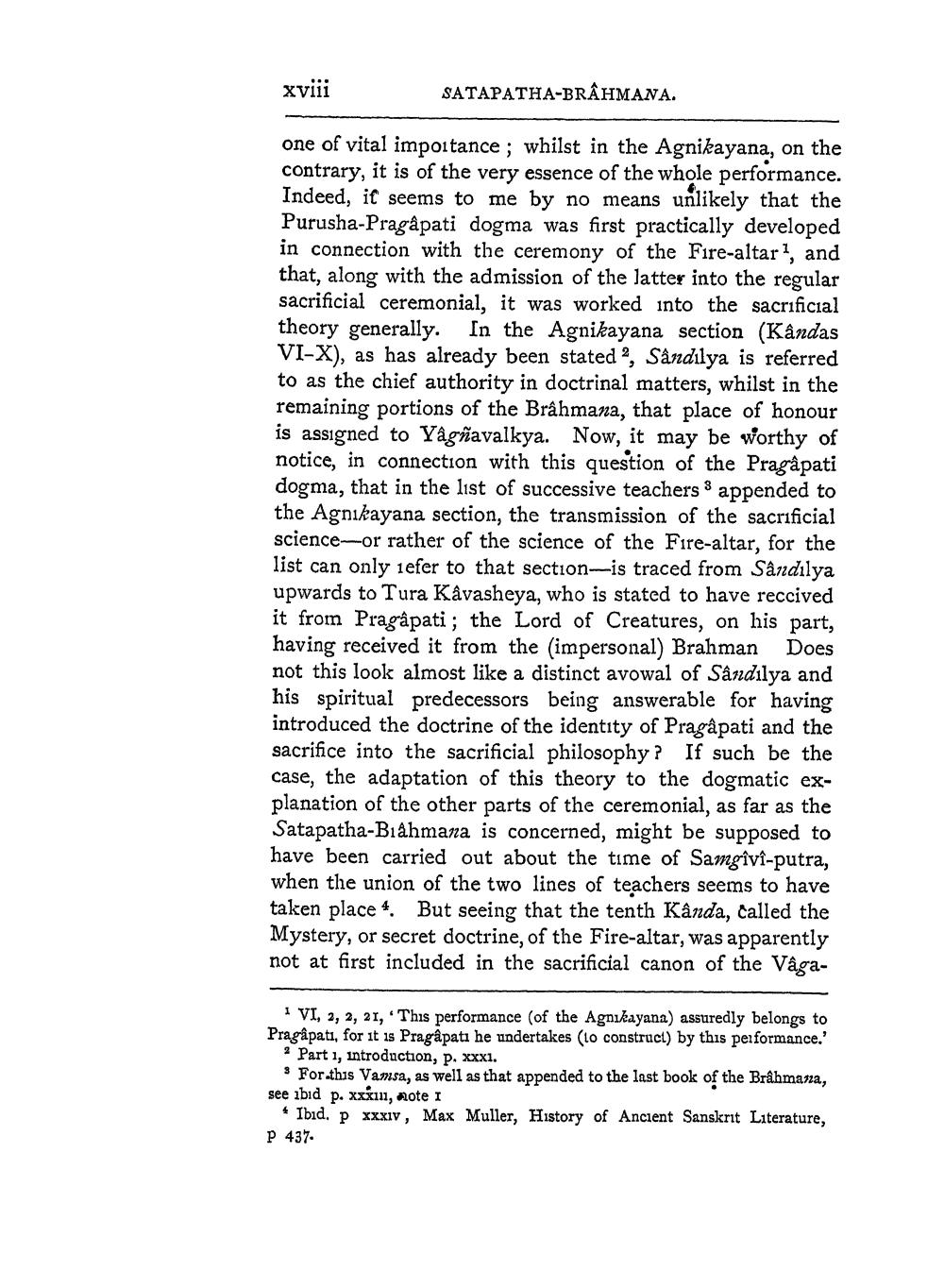________________
xviii
SATAPATHA-BRÂHMANA.
one of vital importance; whilst in the Agnikayana, on the contrary, it is of the very essence of the whole performance. Indeed, it seems to me by no means unlikely that the Purusha-Pragâpati dogma was first practically developed in connection with the ceremony of the Fire-altarl, and that, along with the admission of the latter into the regular sacrificial ceremonial, it was worked into the sacrificial theory generally. In the Agnikayana section (Kândas VI-X), as has already been stated ?, Sandilya is referred to as the chief authority in doctrinal matters, whilst in the remaining portions of the Brâhmana, that place of honour is assigned to Yagñavalkya. Now, it may be worthy of notice, in connection with this question of the Pragâpati dogma, that in the list of successive teachers 3 appended to the Agnikayana section, the transmission of the sacrificial science-or rather of the science of the Fire-altar, for the list can only nefer to that section is traced from Sandilya upwards to Tura Kåvasheya, who is stated to have reccived it from Pragâpati; the Lord of Creatures, on his part, having received it from the (impersonal) Brahman Does not this look almost like a distinct avowal of Sândılya and his spiritual predecessors being answerable for having introduced the doctrine of the identity of Pragâpati and the sacrifice into the sacrificial philosophy? If such be the case, the adaptation of this theory to the dogmatic explanation of the other parts of the ceremonial, as far as the Satapatha-Biâhmana is concerned, might be supposed to have been carried out about the time of Samgîvî-putra, when the union of the two lines of teachers seems to have taken place 4. But seeing that the tenth Kanda, Called the Mystery, or secret doctrine, of the Fire-altar, was apparently not at first included in the sacrificial canon of the Vâga
1 VI, 2, 2, 21, .This performance (of the Agnikayana) assuredly belongs to Pragâpati, for it is Pragâpata he undertakes (lo construct) by this performance.'
2 Part 1, introduction, p. xxxi.
* For this Vamsa, as well as that appended to the last book of the Brahmana, see ibid p. xxxin, note I
Ibid. p xxxiv, Max Muller, History of Ancient Sanskrit Literature, P 437.




